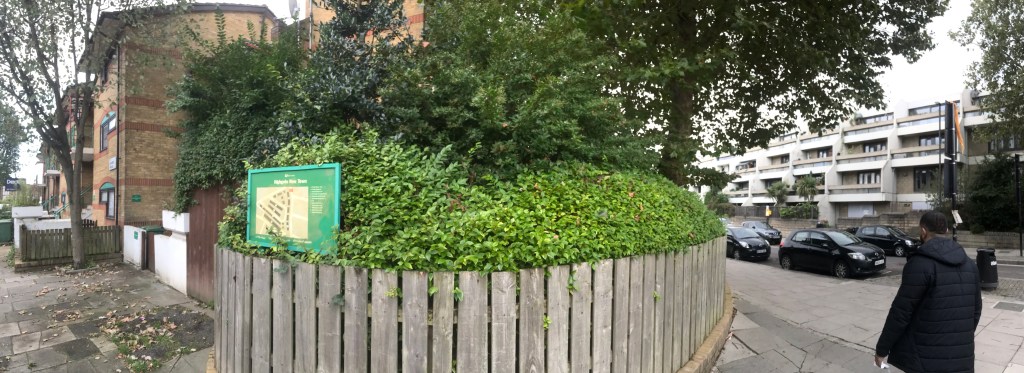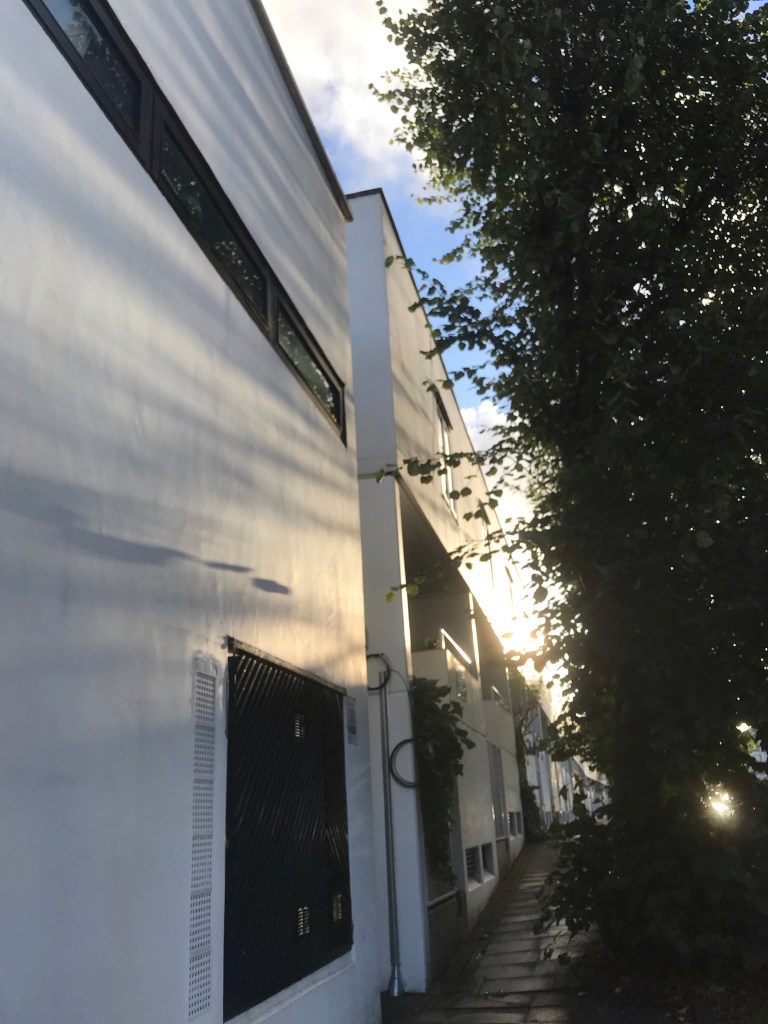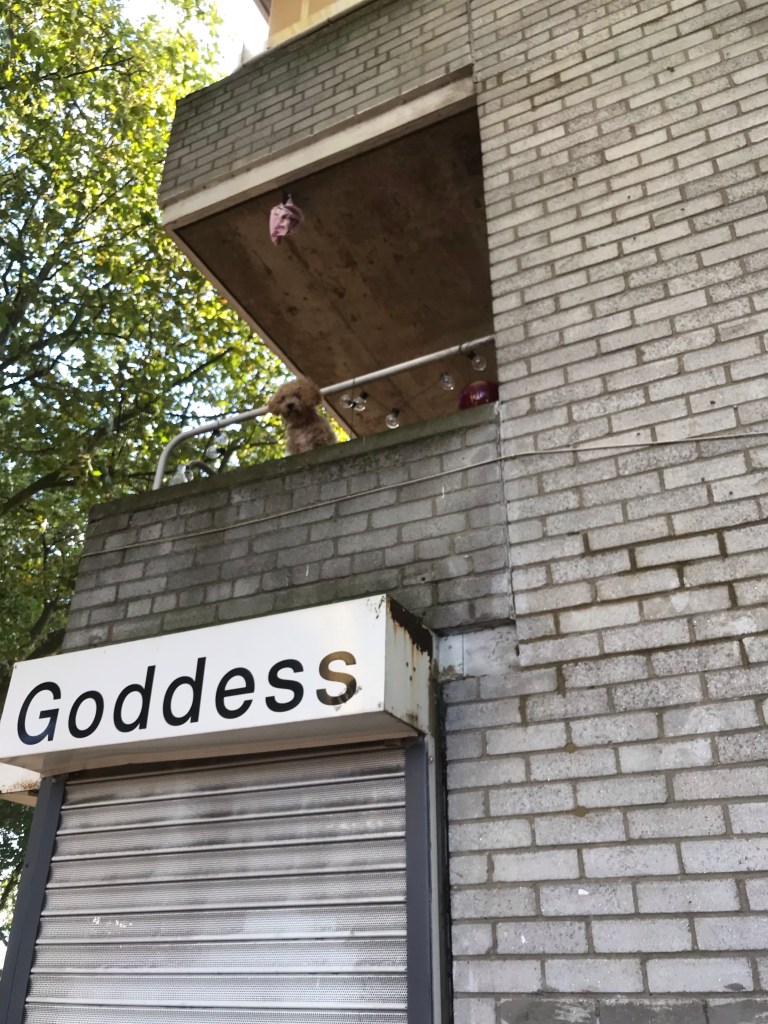Oh, Archway. So much to answer for. We emerged, blinking, into the unexpected sunshine from the tube, and were greeted by the greasy stench of a nearby McDonald’s and the sight of a cyclist bravely heading up the hill to Highgate.
There are, broadly, three types of modernist architecture walk in London.
One: Marvel at bold public buildings. Two: envy private dwellings. Three: admire ambitious public housing projects. One and three both come with a side order of existential despair, for the obvious reason that we shall never see their like again.
Today’s walk was a (3). Camden council, back when they had money and socialism, built loads of impressive and innovative housing estates. We had sun, occasional showers, and a map. Let’s do this.
We start at the Whittington Estate, initially known as Highgate New Town Stage One, a famous one for Those Who Like This Kind Of Thing.
Designed by Peter Tabori and Kenneth Adie, the estate shows Camden’s fun experimentation with long, low-rise, high-density blocks, with gorgeous south-facing balconies and generous, landscaped grounds.
It feels like a fortress, and as with a lot of postwar housing estates, you have that moment of sadness and understanding when you remember that they kind of are, and the hoardes they are defending their people from are private motor vehicles.

There’s also a fun contrast with Highgate New Town Stage 2, where you can pinpoint the exact moment (1978) when the council lost faith with modernism and started building blocks not wholly dissimilar to the Victorian buildings this Brave New World was designed to improve upon.

Onwards and downwards. Haddo House Estate actually predates Camden, designed for the borough of St Pancras by Richard Bailie. Built in 1963, it features some gorgeous glazed staircase towers.

Neighbouring it, from 1971, is Clanfield, a block of sloping maisonettes which look like the matte painting of every Star Trek: TNG federation colony ever.

Walking past Gospel Oak station, we come to Mansfield Road and its beautiful lines; in the unseasonal sun the white block seems to stretch on forever.

Another Camden council affair, this has been well maintained, unlike the maisonettes above, and the raised access deck, safe from the busy road below, is a place of calm, the red quarry brick walls and flooring a hint of what lies inside.

This next building wasn’t too interesting architecturally speaking, but we liked the dog.

Next up is Dunboyne Road Estate, Neave Brown’s first commission for Camden back in 1967. Another good example of the council’s philosophy of low rise, high density blocks, the architect lived on the estate until his death.
Unfortunately we weren’t able to get in and have a proper look, as the entire estate is now gated; a decision perhaps popular with residents, but irritating for nerdy architecture tourists in particular and against the ethos of the estate in general.

After pausing, briefly, to gawp at the beautiful 1930s Isokon, Mecca for north London Bauhaus types, we headed up a wooded path to Russell Nurseries Estate.

While I can’t pretend the architecture is exactly to my tastes, this is a well designed, well maintained collection of houses and flats, with kids enjoying what is a low traffic neighbourhood before the phrase “low traffic neighbourhoods” became a thing, playing football below the inevitable “no ball games” sign.

This estate is peaceful, welcoming, and bittersweet; constructed between 1987 and 1990, it was the last project by Camden’s architecture department. Will we ever see councils in England with the money, power, will and ideological inclination to produce housing worthy of the people?
The evidence of the past thirty years suggests not; but, contradicting my earlier despair, as we must try to fight and dare to hope. Though with flaws and missteps, Camden’s postwar architecture still holds up well, and offers a blueprint for a more hopeful future.
